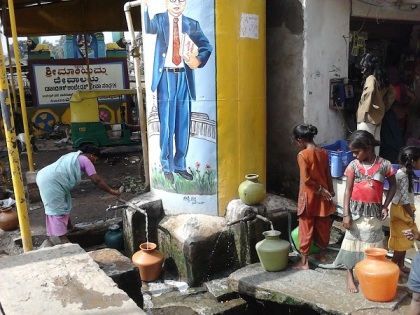Piped water to be the priority for Modi government this year. The Jal Jeevan Mission, announced by finance minister Nirmala Sitharaman in her first budget on July 5, is ready for cabinet approval and will be launched by the Prime Minister.
What toilets were to the Narendra Modi government in 2014 — the symbol of a nationwide crusade to end open defecation and build a cleaner India — piped potable water could well be for Modi’s second tenure.
The objective of the mission is to give access to piped potable water to every rural household by 2024. Only 18% of households in the countryside now have piped water supply, and the Bharatiya Janata Party (BJP)-led National Democratic Alliance (NDA) government is aiming for an over fivefold jump in five years.
The blueprint for the Jal Jeevan Mission, which has been publicised with the tagline “har ghar, nal se jal”, translating as “water from the tap in every home,” is ready and has already been approved by the Expenditure Finance Committee, government officials said. Only cabinet approval is pending.
Minister for Jal Shakti Gajendra Shekhawat said that the day the scheme is approved, the work will start. The blueprint of this is absolutely ready.
Water is a state subject, and Jal Jeevan won’t be an easy mission for the central government to accomplish. Shekhawat’s big idea is to present it as a challenge to local administrations, and turn it into a contest between state governments for central funds.
There is a catch. To receive central funds for water projects, the states and their district administrators will have to fulfill some tough conditions — create an underground storage facility with a sustainable source of water, ensure that the water is piped to households and devise ways for treatment and reuse of discharged water in activities like agriculture.
The minister also added that since water is a state subject, implementation has to be done by states. They will have to work with commitment and priority and the government is here to support them.
He is right in projecting the scheme as a challenge. Nearly 163 million Indians lack access to clean water, the highest number for any country, according to WaterAid, a non-government organisation. Frequent droughts have led to crop failures and led to rural distress in parts of India, where only around a third of the cropland has access to reliable irrigation systems.
According to data from the Jal Shakti ministry, in states like Bihar, Odisha and Jharkhand, fewer than 5% of rural households have piped water. That compares with 99% of rural households that have piped water supply in Sikkim.
For the rural drinking water mission, the government raised its allocation by 22% to Rs 10,001 crores in 2019-2020 from Rs 8,201 crores last year.
A note prepared the Jal Shakti ministry says the plan is to co-opt NGOs to help village councils and their subcommittees manage the planning and running of the local water supply system. In cases where there aren’t enough water supplies for a single village, water from multiple villages will be pooled and shared.
Experts pointed out the importance of groundwater in any national policy on water.
Source: Hindustan Times


